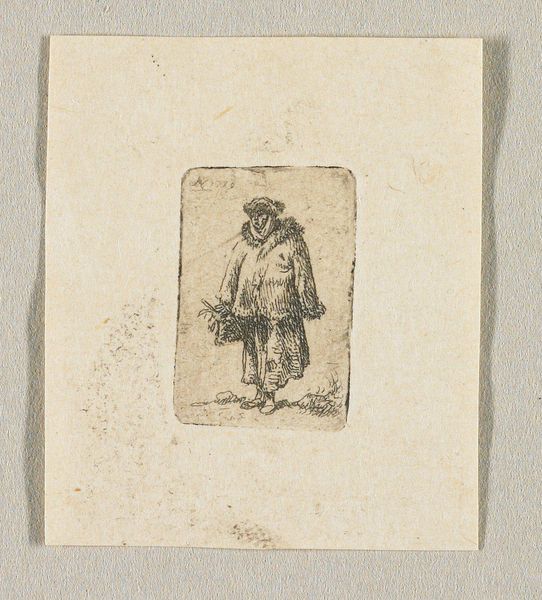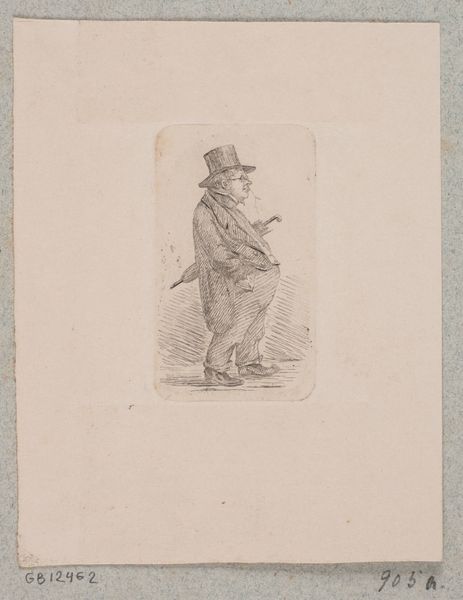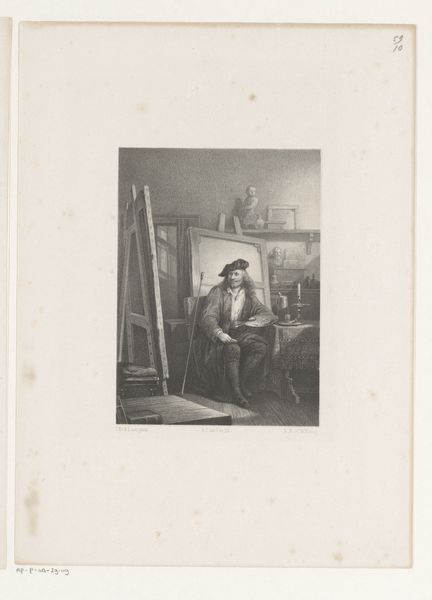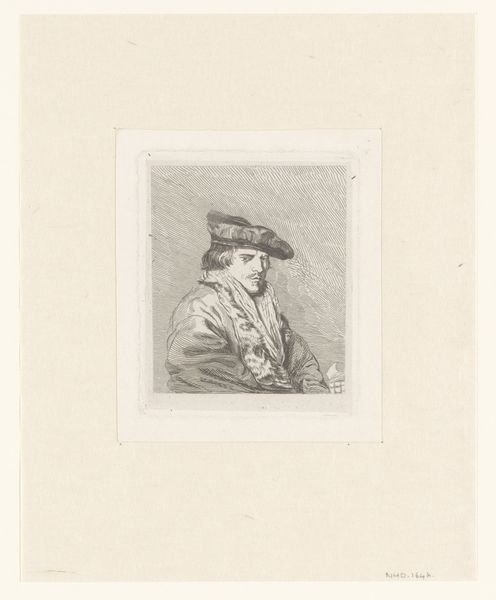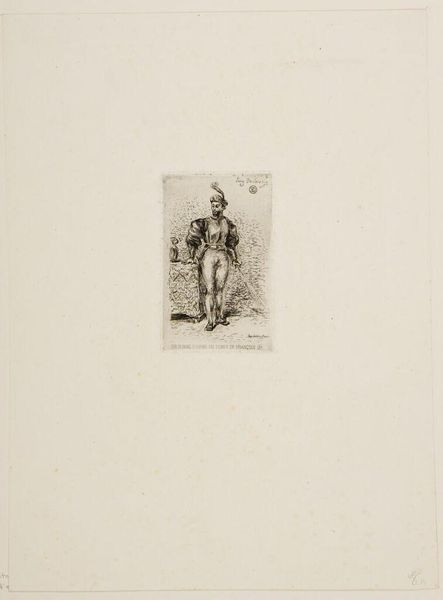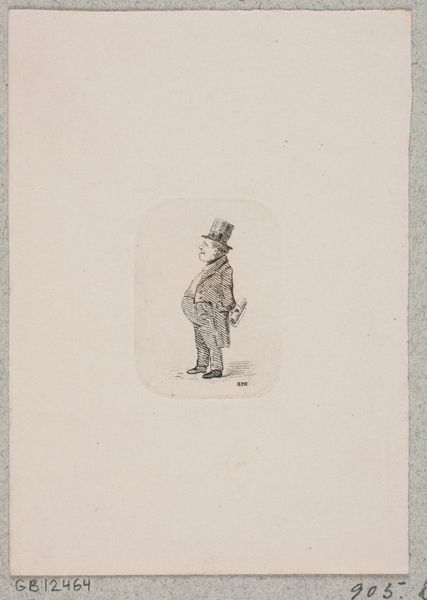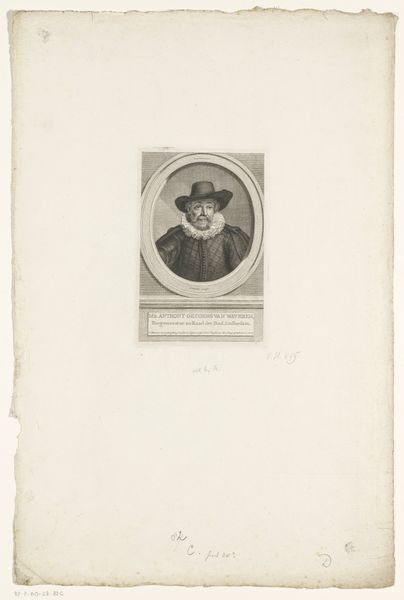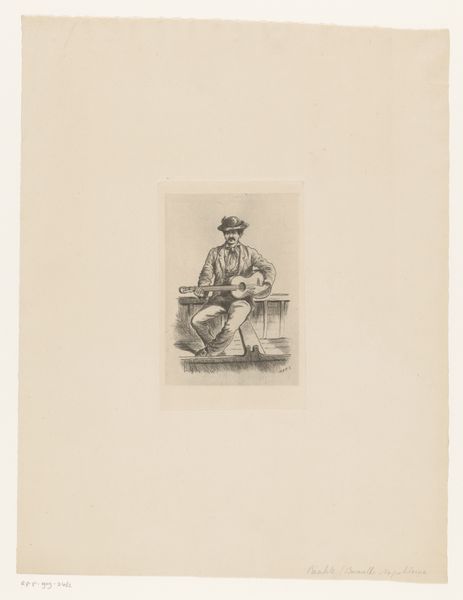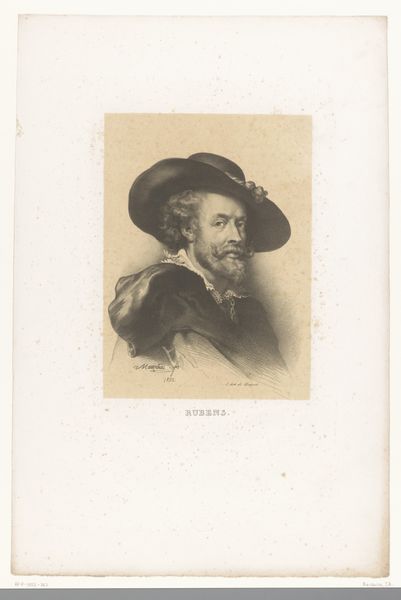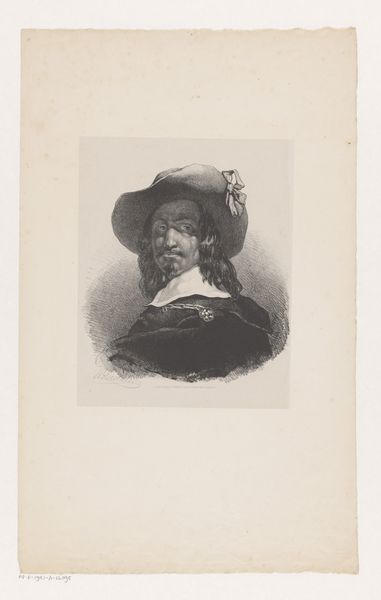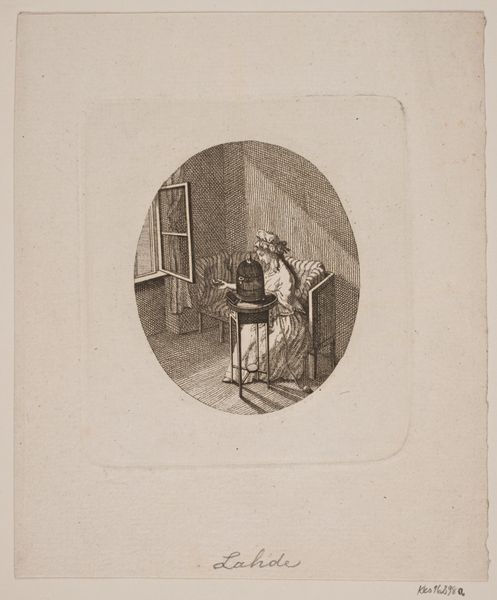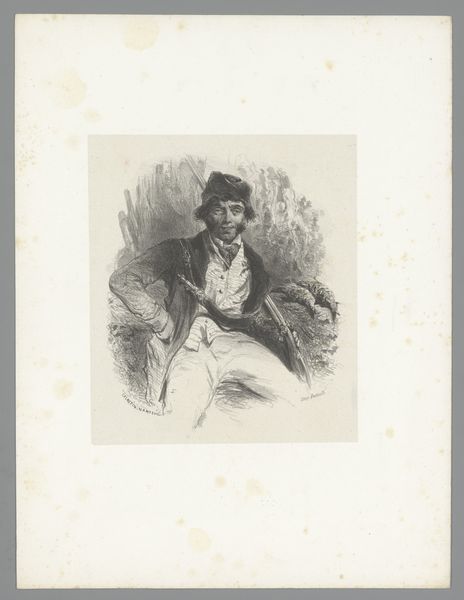
drawing, print, etching, paper
#
drawing
# print
#
etching
#
paper
#
genre-painting
#
realism
Dimensions: 109 × 93 mm (image); 118 × 99 mm (chine); 215 × 158 mm (plate); 307 × 223 mm (sheet)
Copyright: Public Domain
Charles Jacque created this etching, ‘The Broken Crock’, at some point in the mid-19th century. The image shows a seated man holding what appears to be a broken pot or dish, with a table, chair, and various indistinct items in the background. What could the broken crock have meant to Jacque and his audience? 19th-century France was a place of rapid modernization, but also stark inequalities. Jacque specialized in rural scenes; he was part of the Realist movement. Realist artists rejected Romantic idealization and instead depicted the lives of ordinary people. So, Jacque presents us with a scene of everyday life, but the broken crock implies misfortune and hardship, reflecting the realities of rural poverty. To better understand Jacque’s world, we can look at the art criticism of the period and sociological studies of French rural life. The value of this artwork lies in the way it captures a specific time and place, a testament to the social conditions that shaped artistic production.
Comments
No comments
Be the first to comment and join the conversation on the ultimate creative platform.
